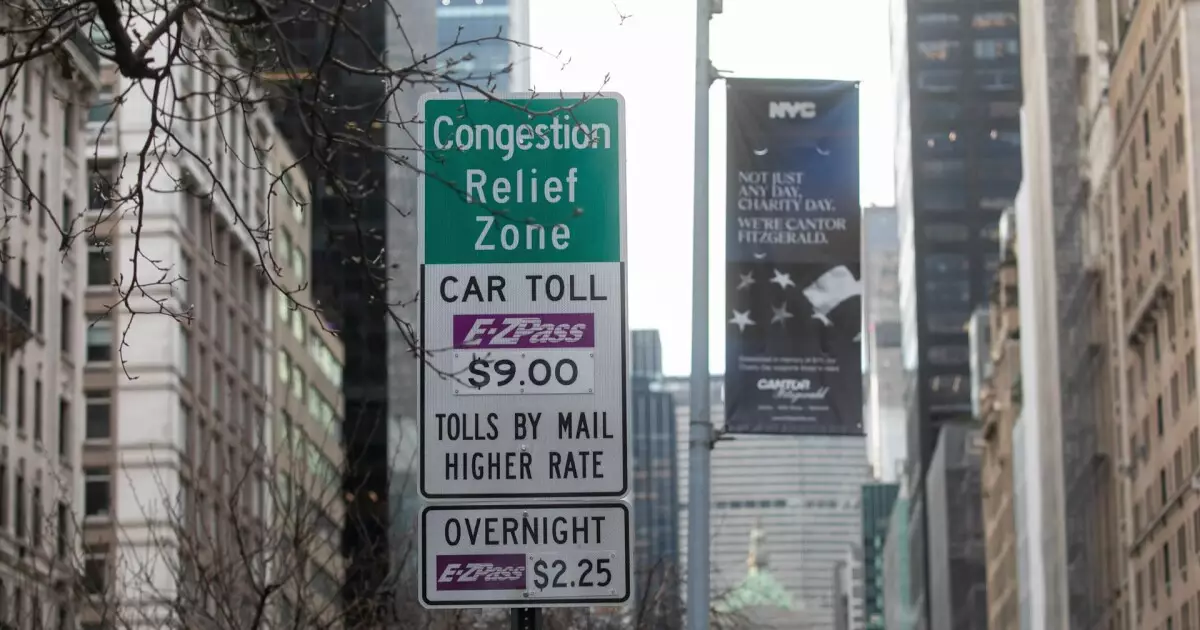New York City’s congestion pricing program was designed to be a groundbreaking initiative aimed at alleviating traffic congestion and raising funds for the transit system. However, just weeks after its implementation, the program finds itself embroiled in controversy following the unexpected termination of federal approval by the Trump administration. This decision has triggered a legal battle that underscores the complexities of urban planning, political maneuvering, and the socio-economic implications of such governmental policies.
The Background: A Long-Standing Proposal
The journey of New York City’s congestion pricing initiative began many years ago, originating as a concept from former Mayor Michael Bloomberg in 2007. Designed to charge drivers a toll for entering Manhattan below 60th Street, it was envisioned as a method to reduce vehicular traffic while simultaneously generating much-needed revenue for public transportation improvements. After years of discussion, legal challenges, and political hurdles, the program finally launched in January, introducing a $9 toll for most drivers.
However, this ambitious plan has faced multiple setbacks. Before its launch, the program was put on hold by current Governor Kathy Hochul over financial concerns, only to be resurrected in November with revised toll rates aimed at making it more palatable for drivers. This turbulent history indicates that congestion pricing has long been a contentious issue, one that raises questions about equity, accessibility, and the sheer complexity of urban infrastructure financing.
The recent termination of federal approval by Transportation Secretary Sean Duffy has illustrated how rapidly the political landscape can change in relation to municipal initiatives. Duffy’s statement emphasized the perceived injustices of imposing tolls on drivers who have already contributed to highway construction through gas taxes. His assertion that the program was, in essence, a financial burden on working-class citizens and small business owners captures the core of the opposition’s sentiments.
The Department of Transportation’s dismissal of the program was based on the argument that it failed to provide a toll-free alternative for drivers, contradicting the goals of the Federal Highway Administration’s Value Pricing Pilot Program. Duffy’s interpretation of the initiative highlighted a broader concern: whether congestion pricing was truly aimed at reducing traffic or merely another method of siphoning funds from road users to improve mass transit systems.
In response, the Metropolitan Transportation Authority (MTA) wasted no time in filing a lawsuit to challenge the federal decision. MTA Chair Janno Lieber described the program as “highly successful,” asserting that it had already led to reduced congestion and improved travel times. This clash of narratives demonstrates the competing perspectives on the effectiveness and intention behind congestion pricing.
The fallout from the Trump administration’s decision raises significant questions about urban transportation policy in New York City and beyond. First, it highlights the difficulties of implementing innovative transportation solutions in the face of political opposition. The prospect of a judicial fight suggests that the resolution will be far from simple, and the long-term viability of the congestion pricing initiative remains uncertain.
Furthermore, this decision may have ramifications that extend beyond New York City. Other metropolitan areas exploring similar congestion pricing models may now approach such initiatives with caution, wary of potential political backlash or federal obstruction. The situation reminds stakeholders that the intersection of transport policy, economics, and politics requires careful navigation and consideration of a diverse array of interests.
As New York City grapples with this conflict over congestion pricing, the implications reach far beyond local traffic patterns. The struggle underscores the fundamental tensions between urban infrastructure needs and the political frameworks that govern them. With the ever-increasing challenges posed by urbanization, climate change, and traffic congestion, it is crucial for cities to find equitable and effective solutions. As the situation continues to unfold, it is clear that the debate over congestion pricing is not just about tolls—it is a reflection of urban values, priorities, and the ongoing battle for a sustainable future in metropolitan landscapes.


Leave a Reply